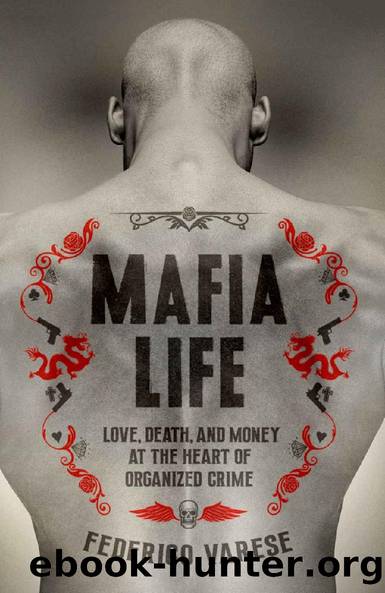Mafia Life by Federico Varese

Author:Federico Varese [Varese, Federico]
Language: eng
Format: epub, azw3
Publisher: Oxford University Press
Published: 2018-03-06T23:00:00+00:00
Yakuza movies loved by the public but not by the Yakuza
The Yakuza films by two great Japanese directors, SatÅ Junya and Fukasaku Kinji, certainly resonated with the audiences in the 1970s but not with the Yakuza. Working in the early 1960s as young assistant directors at TÅei production company, SatÅ and Fukasaku changed the Yakuza film genre forever and their early works deserve to be better known outside Japan. What is most astonishing for todayâs viewer is how much this Japanese ânew waveâ resembled, and in many ways anticipated, its American counterpart â particularly with regard to the style of directors coming of age in the 1960s and 1970s, such as John Boorman, Robert Altman, Warren Beatty, and, above all, Martin Scorsese. Their films were not the hagiographies favored by mobsters themselves.
SatÅ and Fukasaku had direct experience with the vast underground black market that supported the post-war Japanese economy and had seen plenty of gang conflict. They had also witnessed â and at times taken part in â student demonstrations, such as the protests against the renegotiation of the US Security Treaty with Japan in 1959. SatÅ got the chance to direct his first feature film, which explores the senseless militarism that brought the country to war, in 1963.* By 1967, he had turned his attention to the Yakuza genre, injecting it with a dose of realism. Set in post-war Japan, SatÅâs Yakuza films portray bosses as manipulative and greedy, often consorting with right-wing politicians.â His third feature, Organised Crime 3: Loyalty Offering Brothers (1969), follows a war veteran who becomes a lower-ranking Yakuza. The movie opens with the protagonist defending a Japanese woman from American soldiers who try to rape her, and they later marry. Despite his initial good deed, he is no better than the Americans: he joins other Yakuza and sets up prostitution rings, stealing girls from US-run brothels. The central character teams up with a greedy sociopath and they start to run a protection racket. Their gang even sets up a torture chamber to enable debt collection from reluctant businessmen. At the filmâs end, the outrageous behavior of both characters leads to a gang war. As in American gangster movies, the hero is selfish, morally impure, and, ultimately, a sick loner.
Fukasaku revolutionized the genre by introducing a new style as well as new themes. In his films, the Yakuza is indistinguishable from any other institution of authority, its members greedy and ruthless in their pursuit of power. The clear-cut struggle between good and evil liquefies. The protagonist of Street Mobster (1972) is a loser â born on the day that Japan surrenders to the Allied Forces â who refuses to pay a cut to the local boss and is eventually killed. He is, however, far from being an honorable man; instead, he is a dedicated materialist who starts off by raping young women newly arrived from the countryside and selling them to brothels. As he ascends in the criminal world, he strikes up a relationship with
Download
This site does not store any files on its server. We only index and link to content provided by other sites. Please contact the content providers to delete copyright contents if any and email us, we'll remove relevant links or contents immediately.
Blood and Oil by Bradley Hope(1531)
Wandering in Strange Lands by Morgan Jerkins(1374)
Ambition and Desire: The Dangerous Life of Josephine Bonaparte by Kate Williams(1346)
Daniel Holmes: A Memoir From Malta's Prison: From a cage, on a rock, in a puddle... by Daniel Holmes(1295)
It Was All a Lie by Stuart Stevens;(1265)
Twelve Caesars by Mary Beard(1258)
The First Conspiracy by Brad Meltzer & Josh Mensch(1140)
What Really Happened: The Death of Hitler by Robert J. Hutchinson(1131)
London in the Twentieth Century by Jerry White(1114)
Time of the Magicians by Wolfram Eilenberger(1089)
The Japanese by Christopher Harding(1086)
Twilight of the Gods by Ian W. Toll(1085)
Cleopatra by Alberto Angela(1063)
A Woman by Sibilla Aleramo(1054)
Lenin: A Biography by Robert Service(1046)
The Devil You Know by Charles M. Blow(986)
Reading for Life by Philip Davis(973)
The Life of William Faulkner by Carl Rollyson(925)
1965--The Most Revolutionary Year in Music by Andrew Grant Jackson(924)
